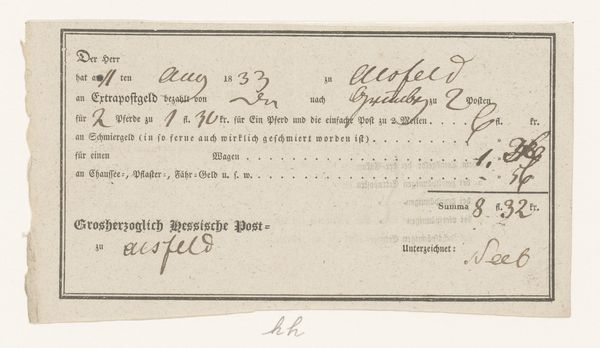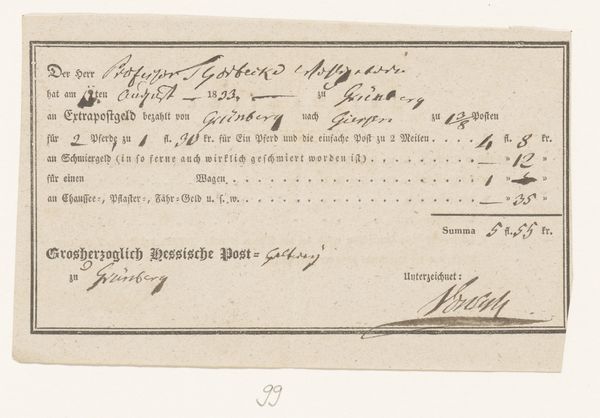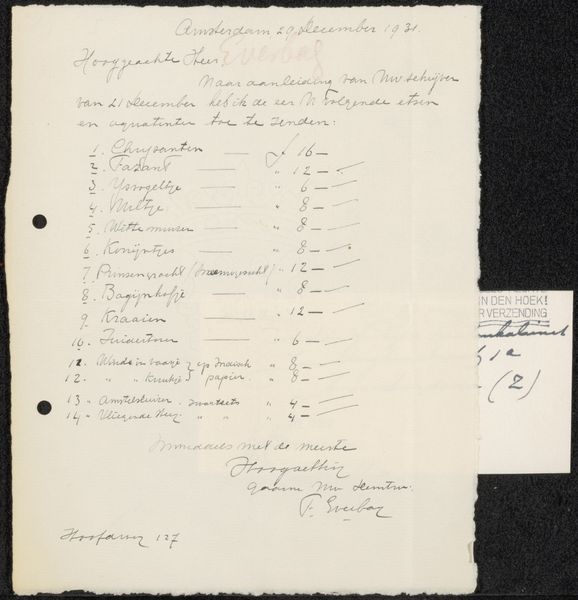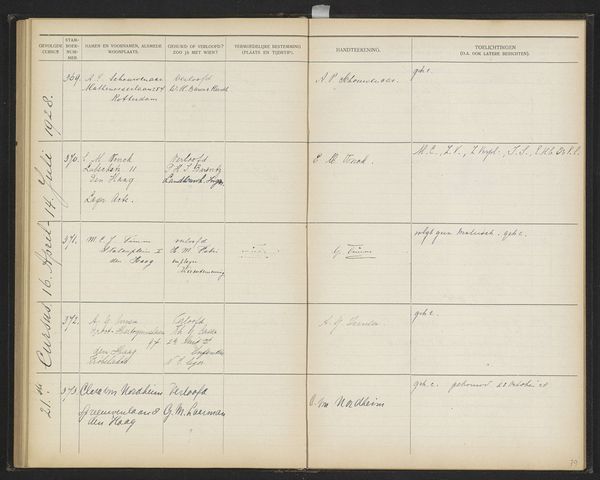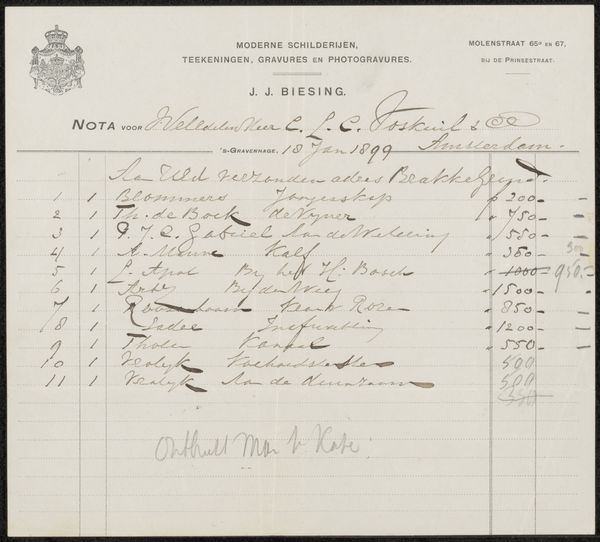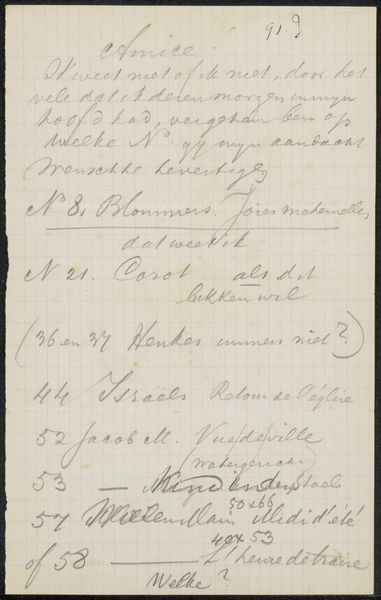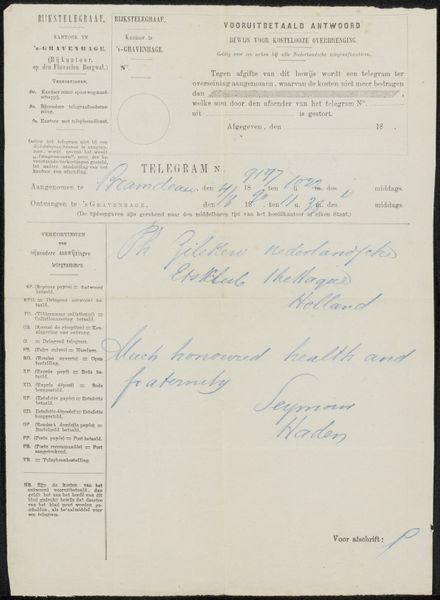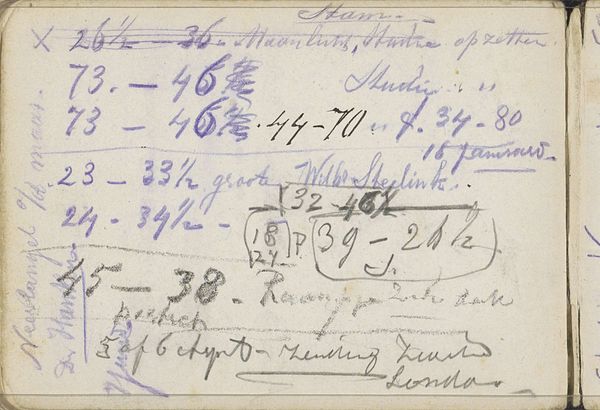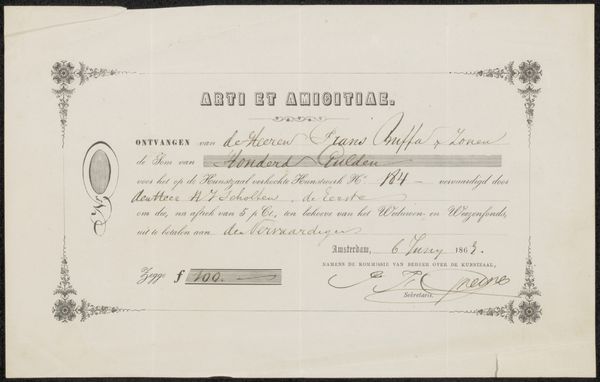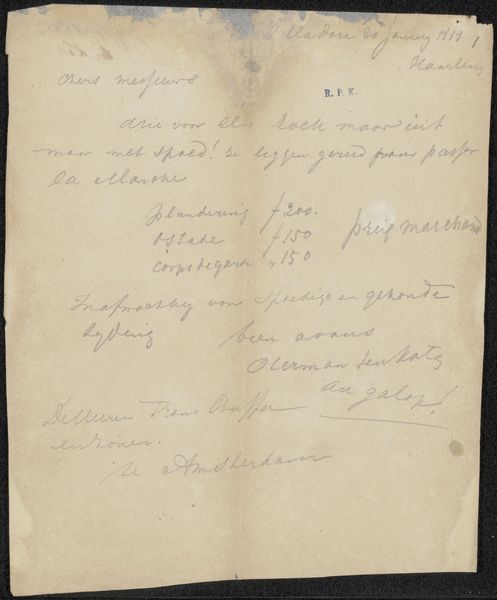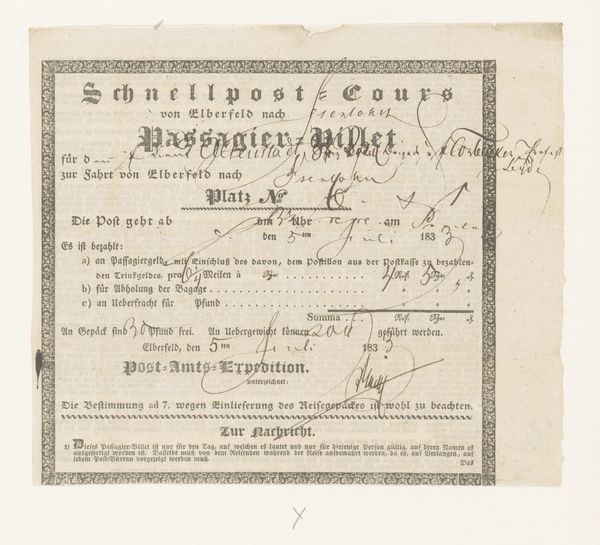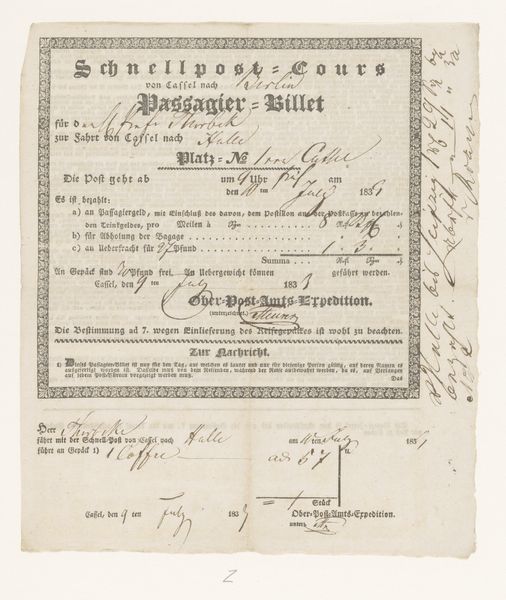
drawing, print, paper, ink
#
drawing
#
aged paper
#
hand written
#
hand-lettering
# print
#
hand drawn type
#
hand lettering
#
paper
#
personal sketchbook
#
ink
#
hand-written
#
fading type
#
romanticism
#
handwritten font
#
handwritten
Dimensions: height 19.8 cm, width 24.1 cm
Copyright: Rijks Museum: Open Domain
Curator: This piece, held at the Rijksmuseum, is titled "Reisdocument," likely dating from 1824 to 1829, by an anonymous creator. It's crafted from ink on paper and is presented as a drawing and a print. Editor: My immediate impression is of something very delicate. The aging of the paper, the faded ink… it speaks of transience, of lives in motion. The composition, the grid...it's all so precisely executed. Curator: Indeed. Structurally, we see a clear hierarchy of information, organized through the hand-drawn grid. Semiotically, the script, particularly the variations in size and weight, are crucial to its functionality as a postal receipt. Editor: Precisely, but I see it through a lens focused on production: who produced this object? The labor involved in carefully writing each character, in adhering to the governmental standards it signifies. It's not just a receipt. Curator: While its purpose is utilitarian, the calligraphic flourishes elevate it beyond the purely functional. Consider the formal relationship between the dense text blocks and the empty spaces – a sophisticated visual interplay. The handwritten quality disrupts rigid standardisation. Editor: I agree, that handwriting is critical. It individualizes a piece meant to standardize transit and delivery. Consider that signature at the bottom. What’s the socio-economic background of the scribe versus the individual travelling? We’re looking at labor, literacy and access all mediated by this object. Curator: The interplay between Romanticism and function is remarkable. There’s a certain nostalgia evoked through the imperfect impression; a beauty arising from its original intention, a receipt of sorts, meant to expedite and document travel.. Editor: It certainly challenges traditional divisions, hinting at social history through the material reality of transportation of baggage in the 19th century. These documents allow a look into logistical details that are easily lost to grand historical narratives. Curator: Analyzing its form reveals the intended hierarchy of its practical intent. It's a fascinating artifact—beautiful and pragmatic, demonstrating how even mundane objects are artfully created. Editor: Agreed. By tracing the threads of its production and social usage, it transcends simple form, connecting us with forgotten journeys.
Comments
No comments
Be the first to comment and join the conversation on the ultimate creative platform.

